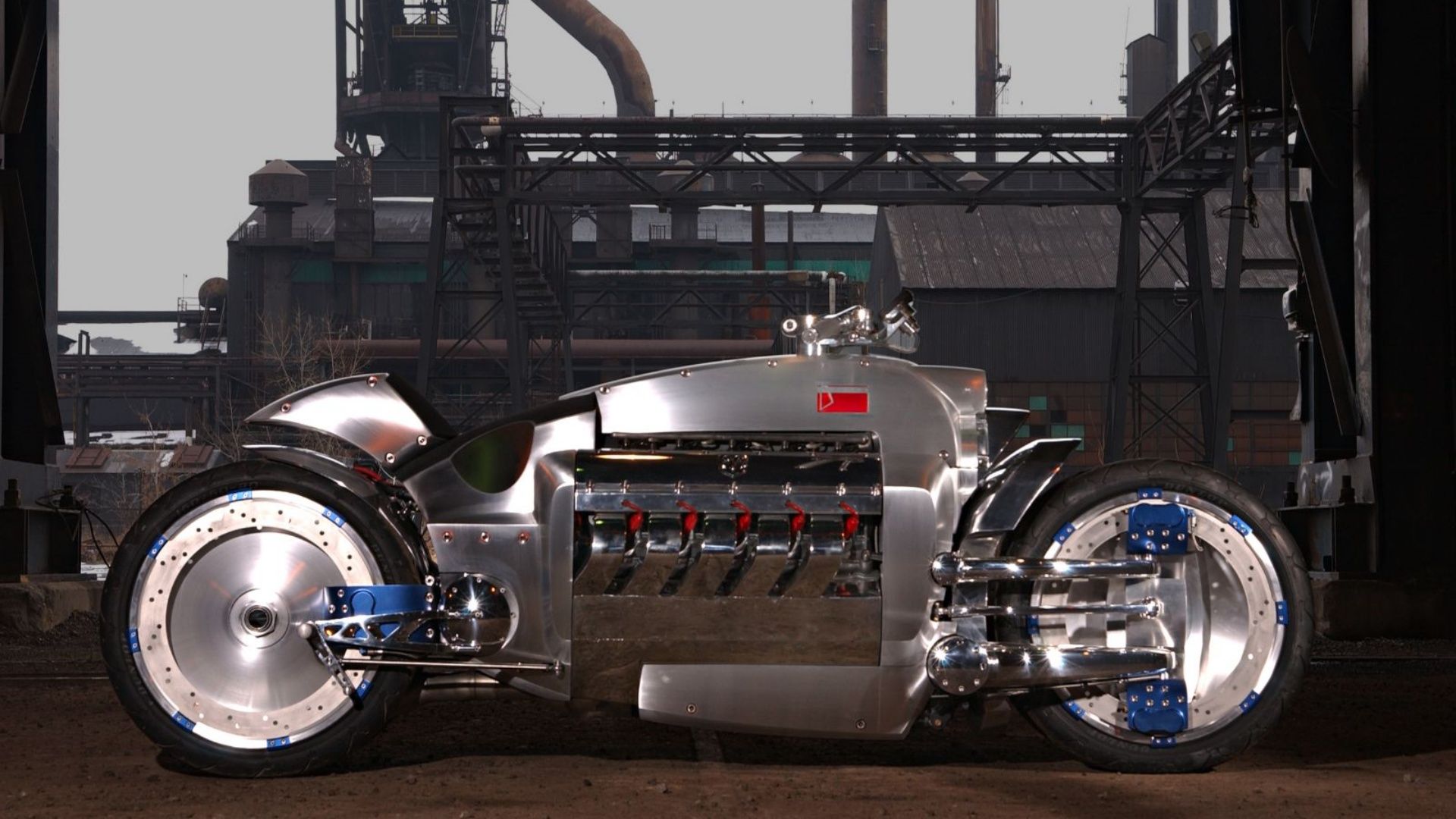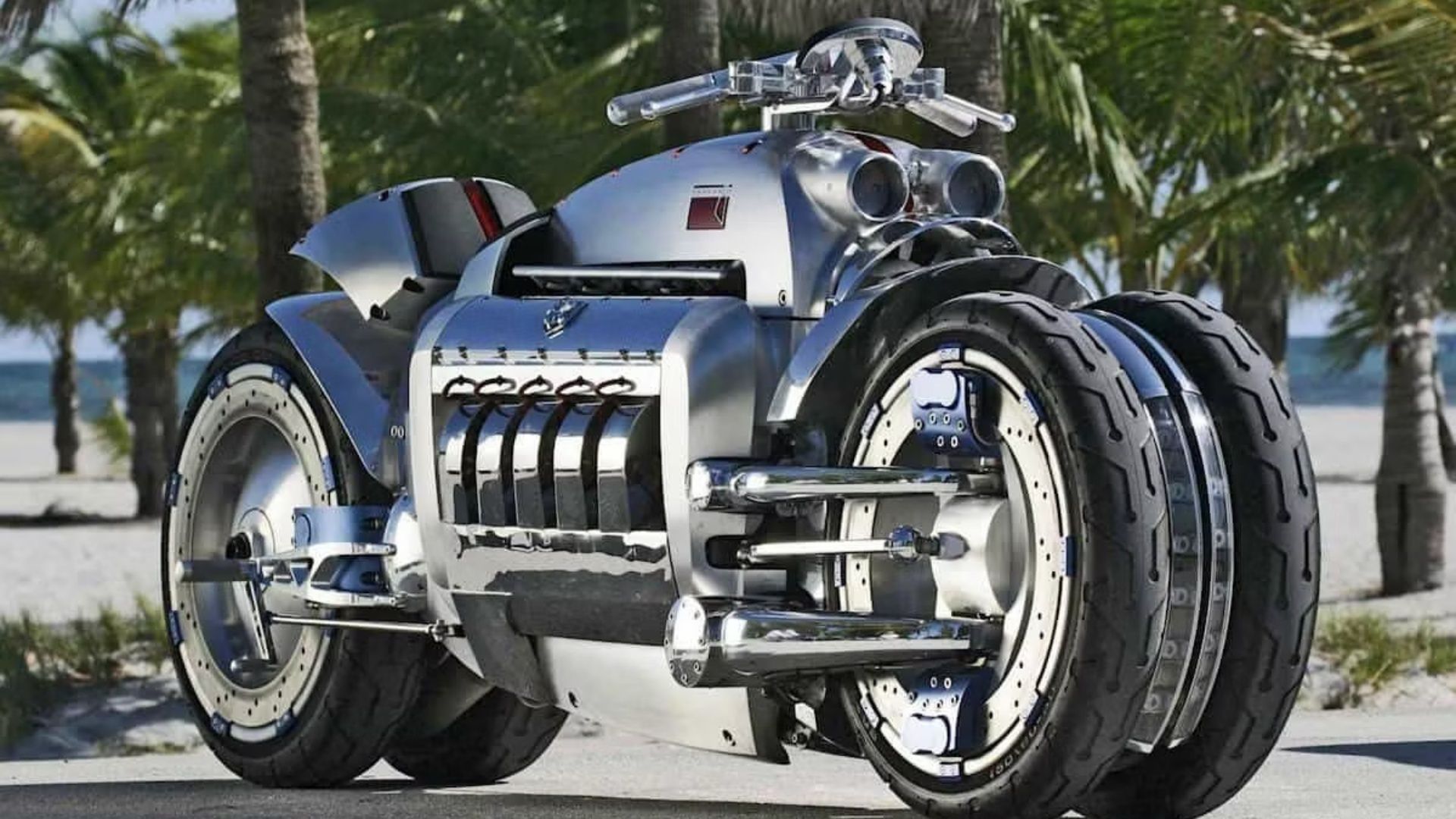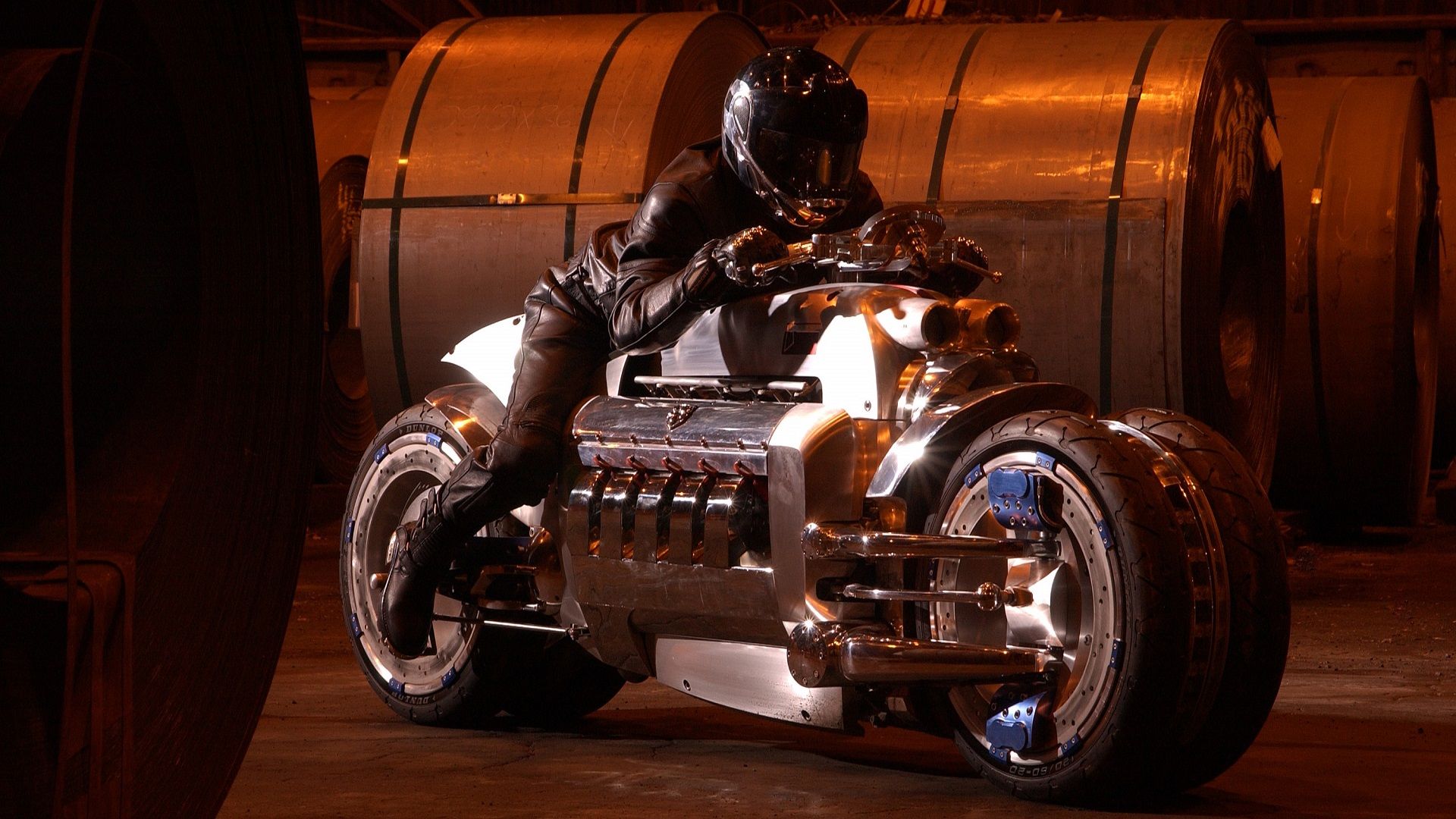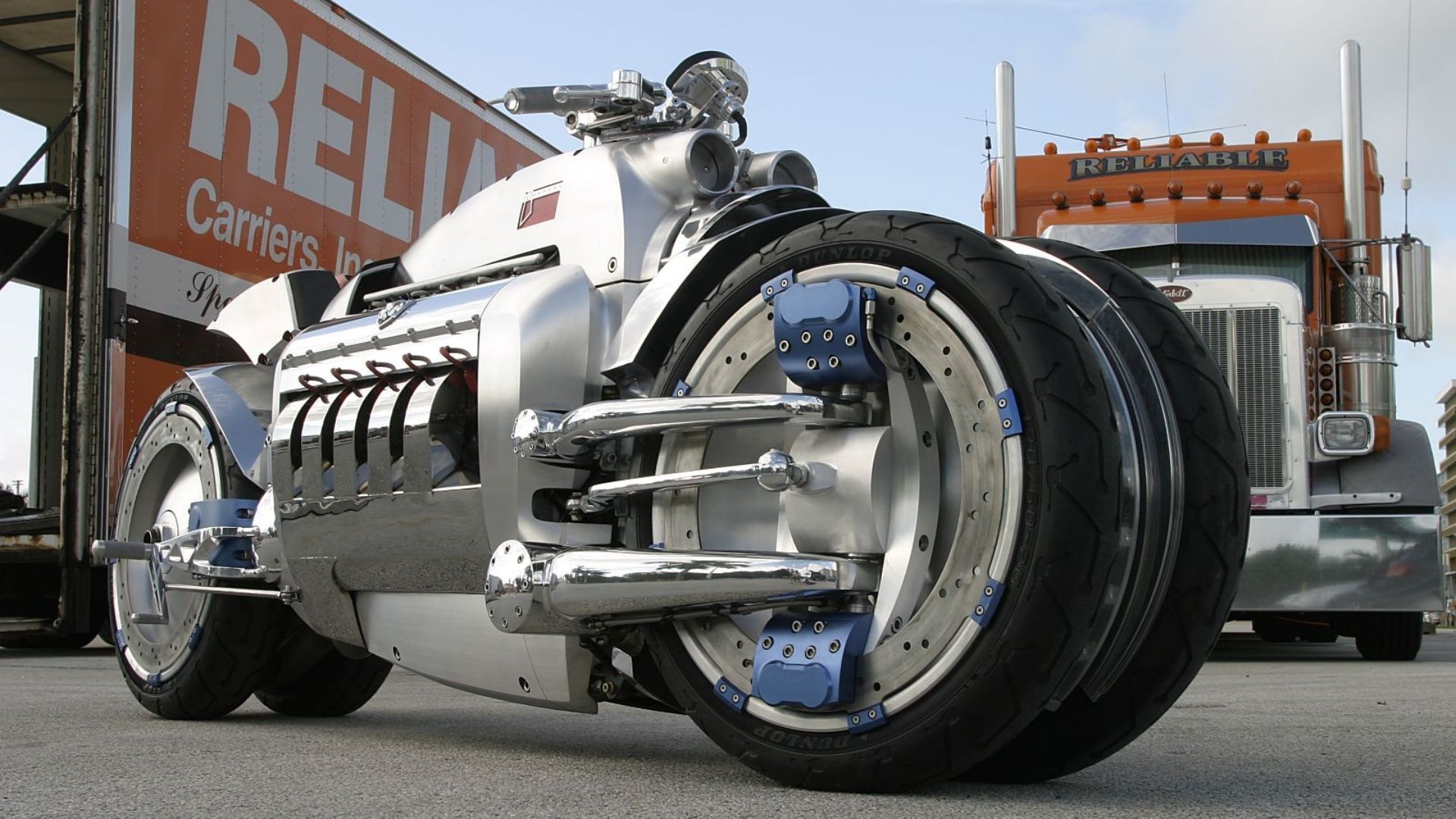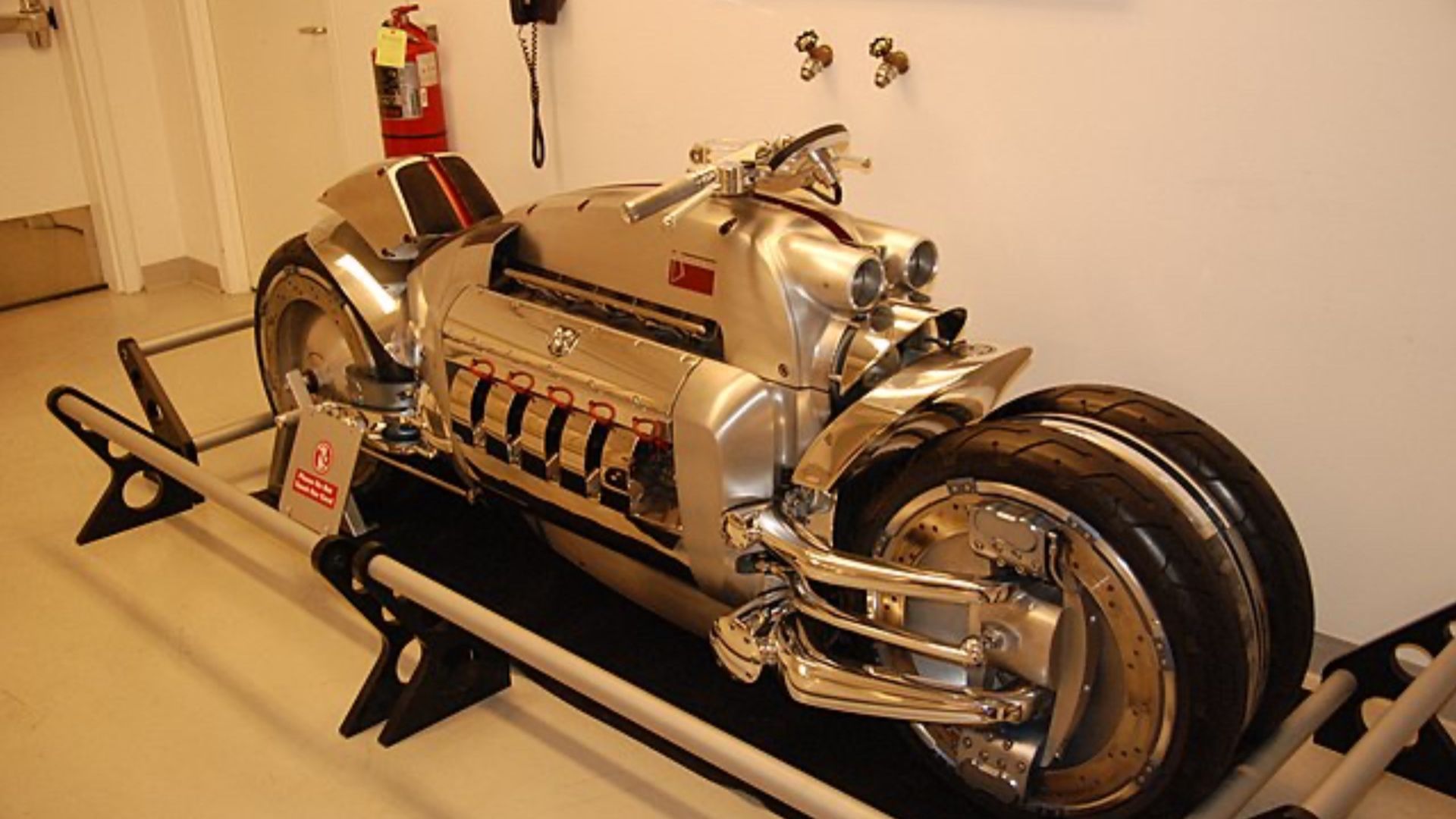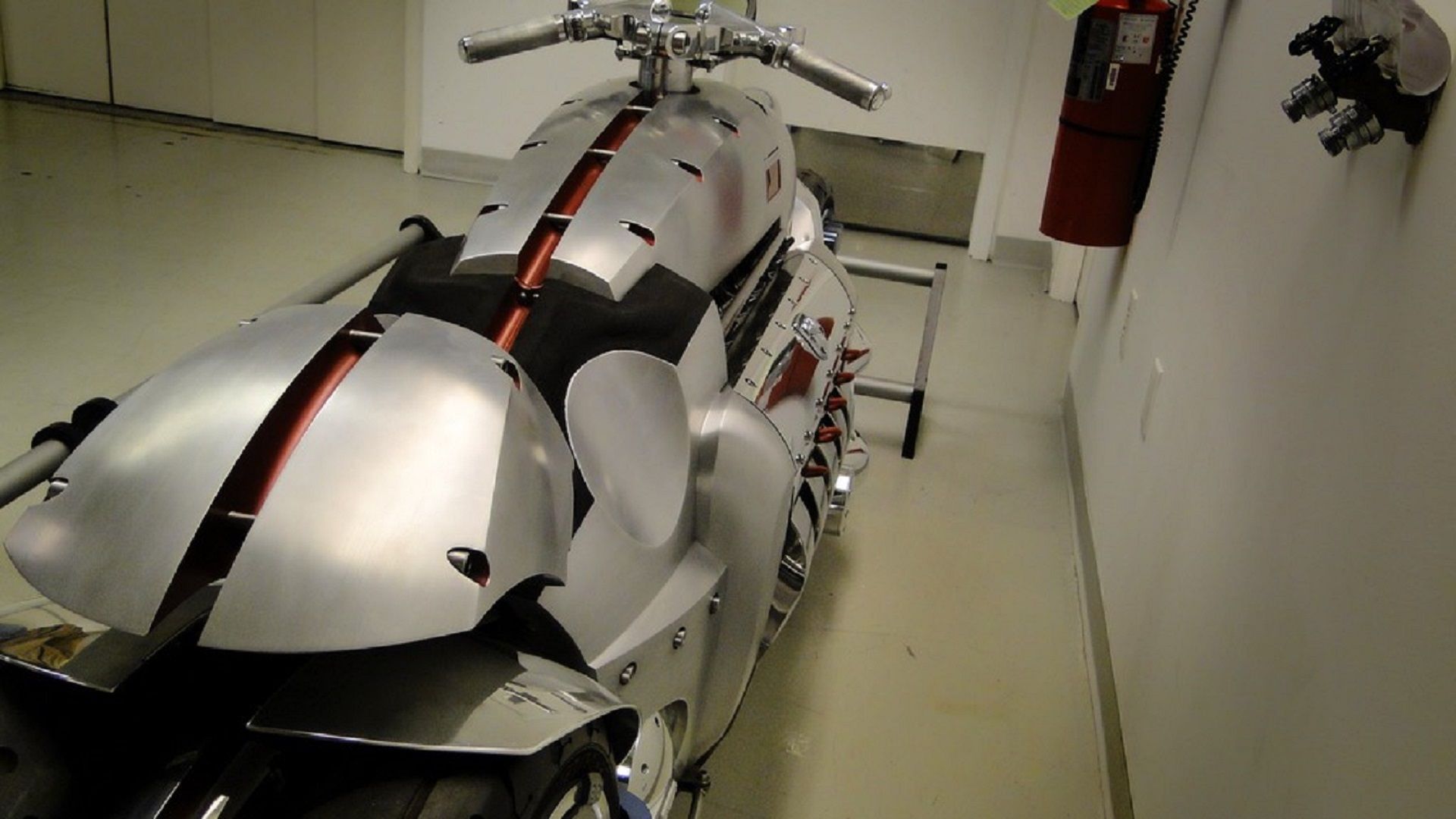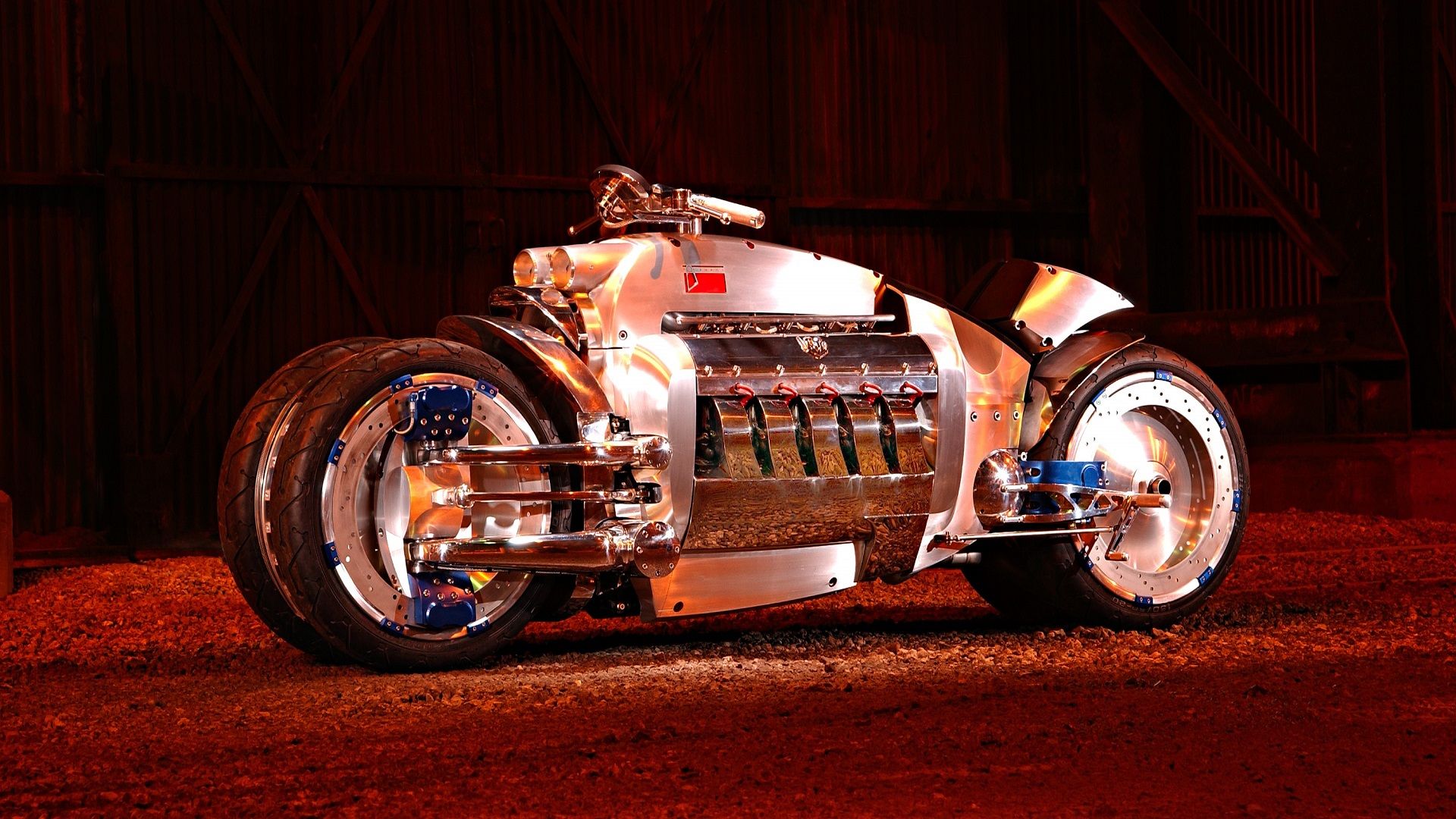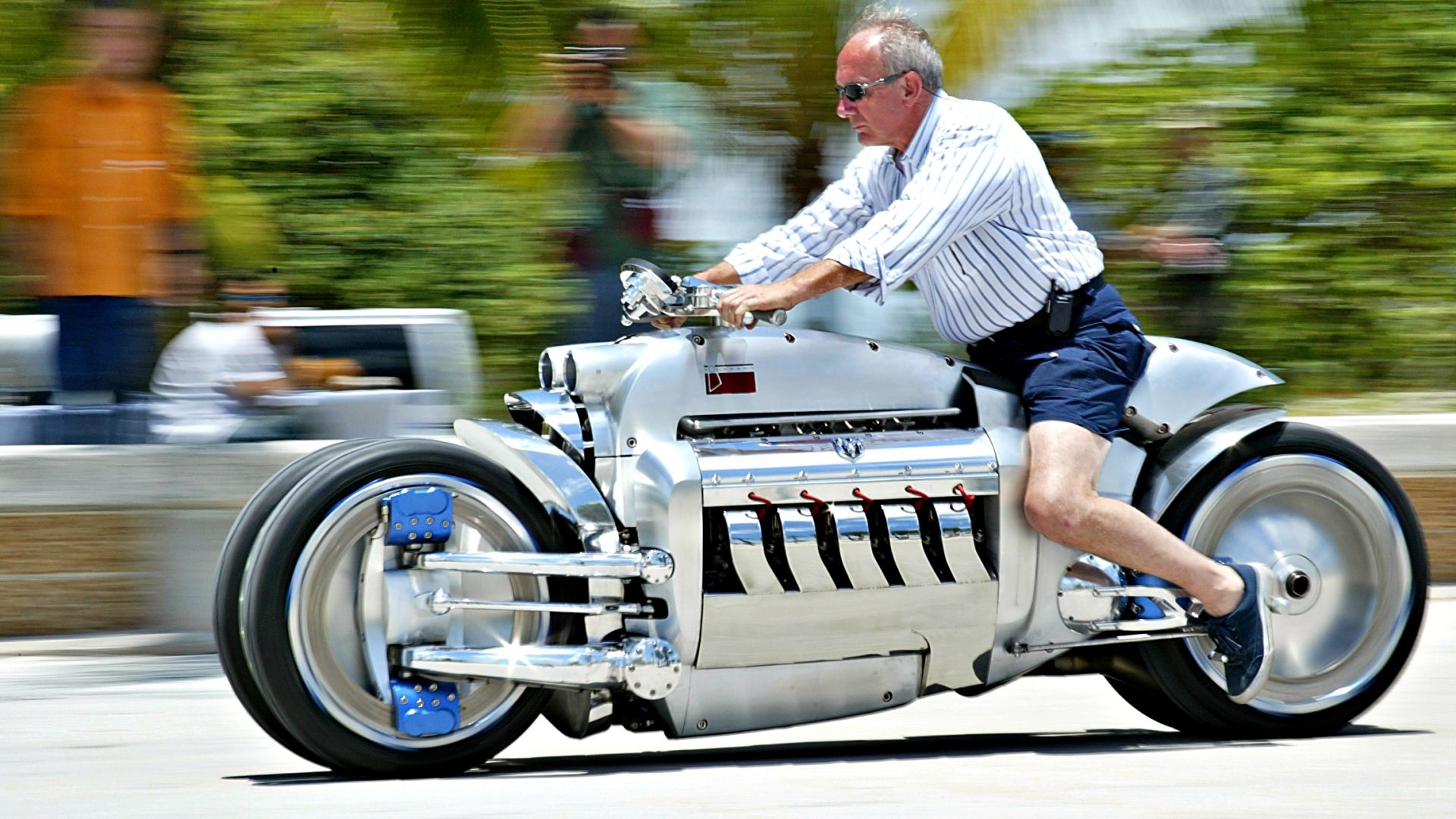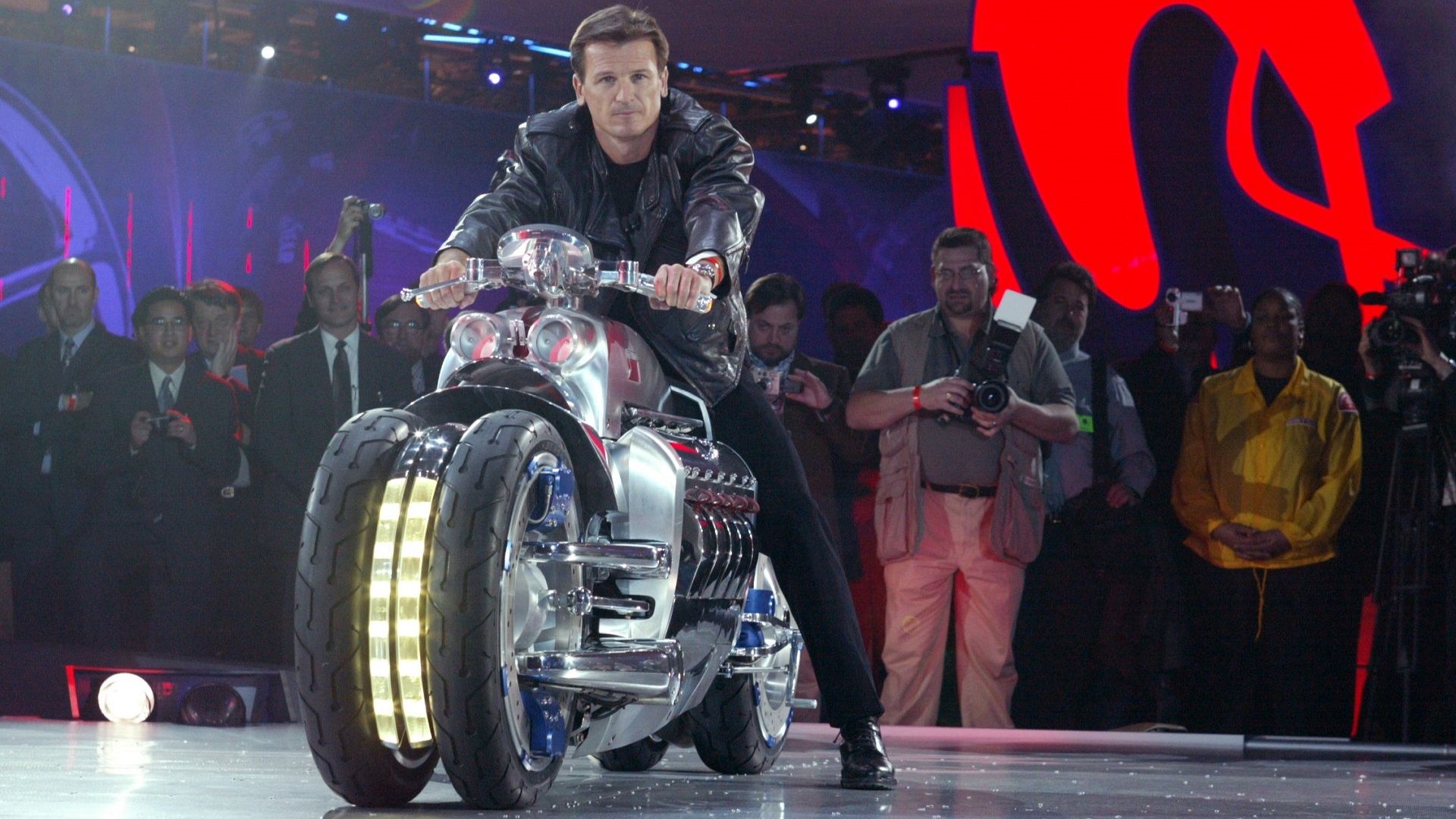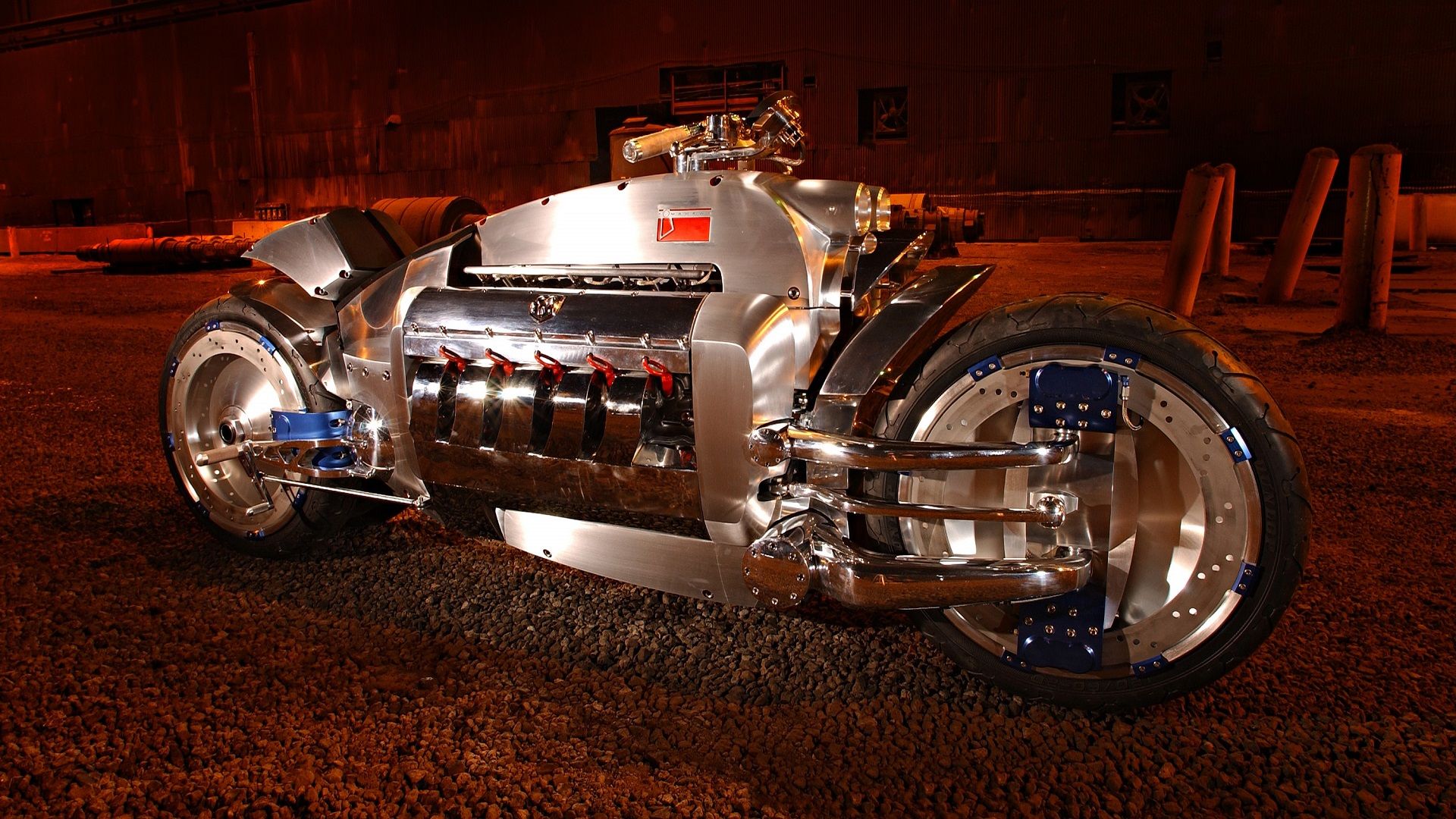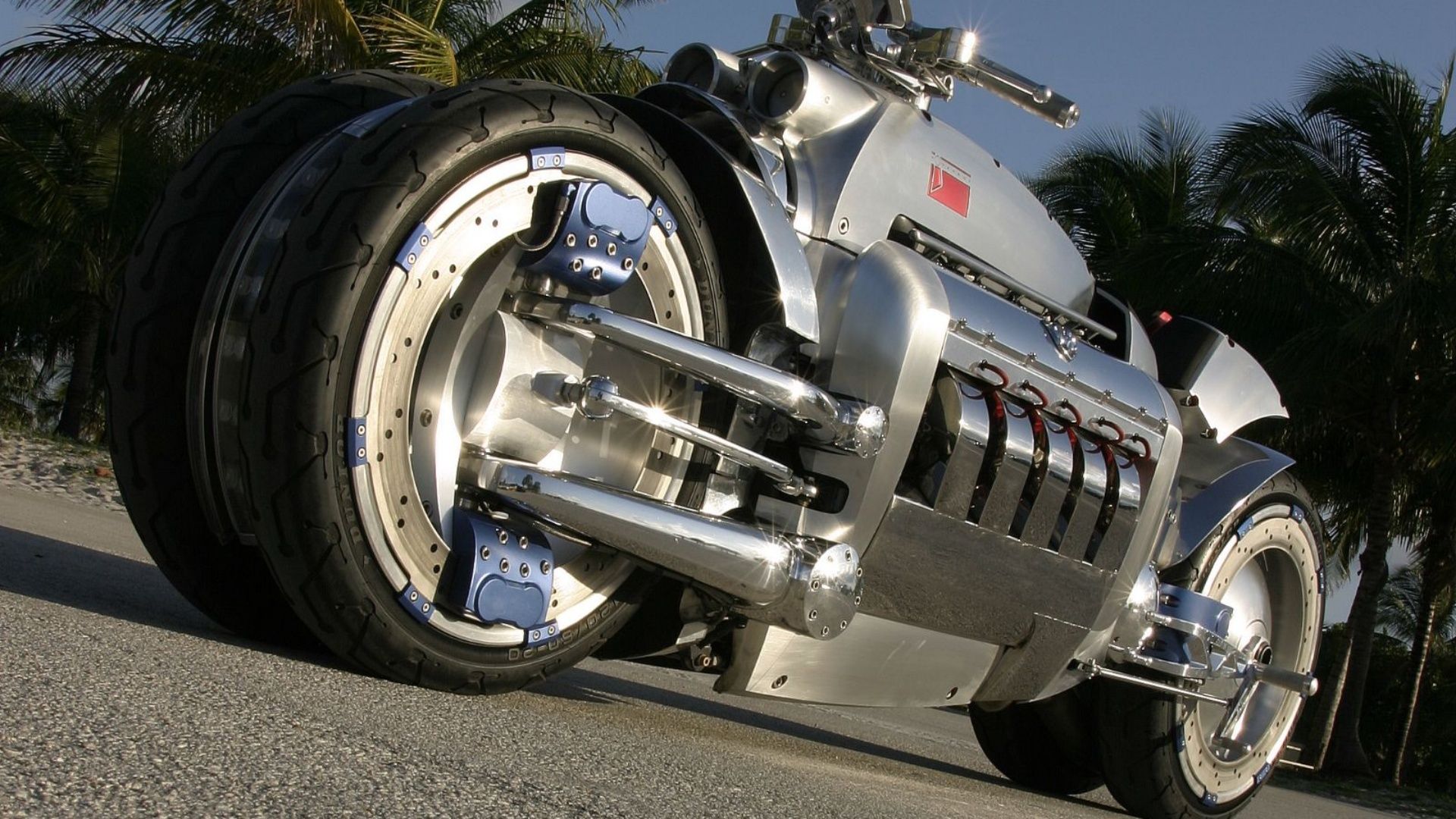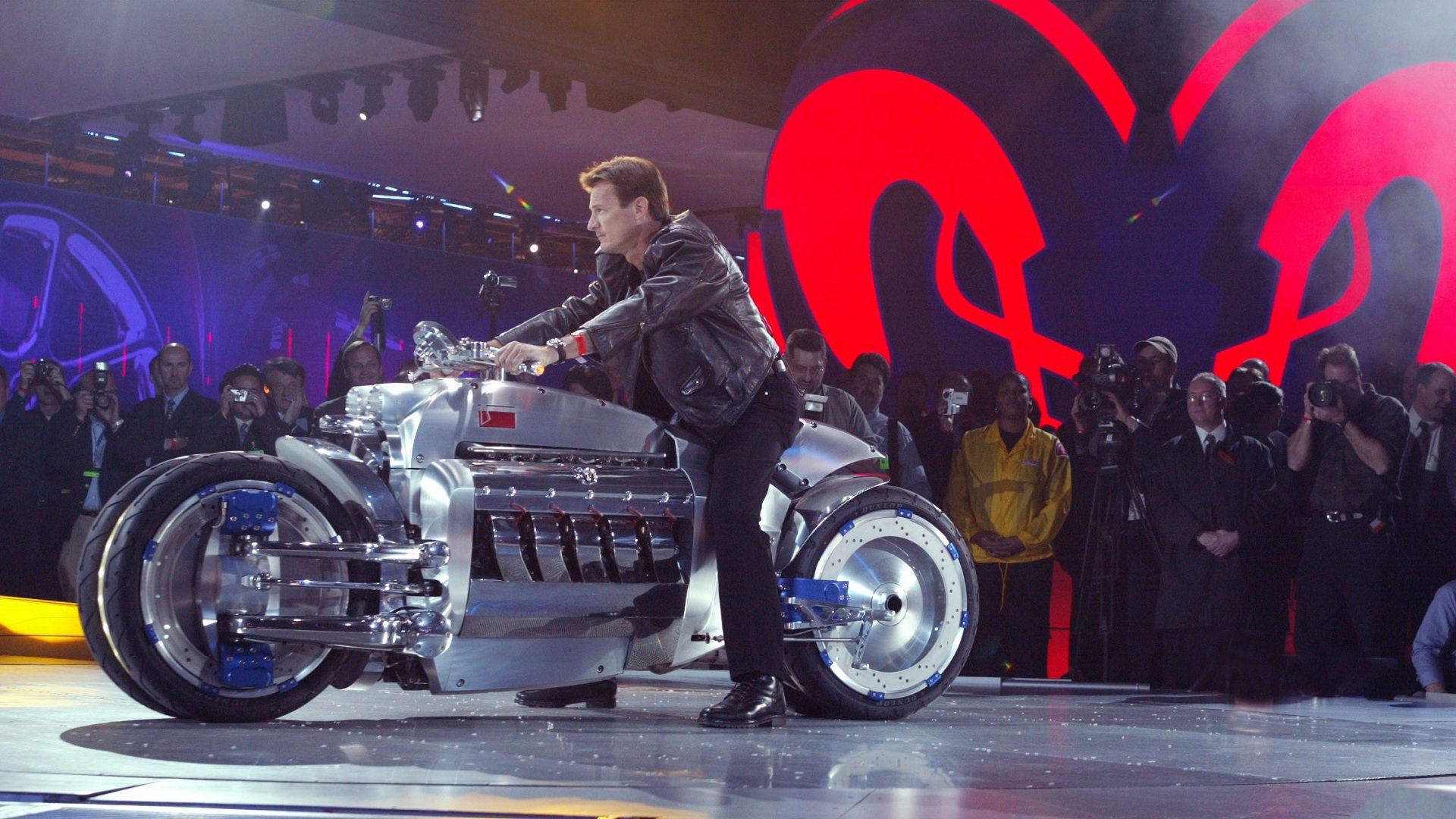Read update
- The Dodge Tomahawk may not have been a motorcycle you could get your hands on to take out for a quick cruise around the block, but it is still one we can all drool over. So, to keep our readers updated with all the latest details, we refreshed and updated this article with all the latest information and specs to keep you coming back for more.
Dodge knows a thing or two about producing some insane concepts, but out of these, not many are much crazier than the Dodge Tomahawk. Back in 2003, Dodge unveiled the wildest concept vehicle ever in the shape of the Tomahawk. Powered by the 8.3-liter V-10 engine from the Viper muscle car, it was conceived by Chrysler Group employees Bob Schroeder and Dave Chyz and unveiled at the 2003 North American International Auto Show.
Even though it was intended as a branding and marketing operation, as many as nine are said to have reportedly been sold via the Neiman Marcus catalog for at least $550,000 each! It gained massive publicity for the Chrysler Group, much of which was thanks to its biggest talking point: how fast it went. The Tomahawk's top speed was reportedly rated at 420 MPH. For reference, the fastest motorcycle in the world currently, the Kawasaki Ninja H2R, has reached a measly 249 MPH in comparison. That said, there are no official real-world tests for the Tomahawk, presumably because no one was ever foolish enough to try it out. There's a lot more to this concept, though, and here are 15 facts you must know.
UPDATE: 2024/04/01 13:15 EST BY UTKARSH SOOD
The Dodge Tomahawk may not have been a motorcycle you could get your hands on to take out for a quick cruise around the block, but it is still one we can all drool over. So, to keep our readers updated with all the latest details, we refreshed and updated this article with all the latest information and specs to keep you coming back for more.
In order to give you the most up-to-date information possible, the data used to complete this article was sourced directly from the manufacturer's website alongside authoritative sites.
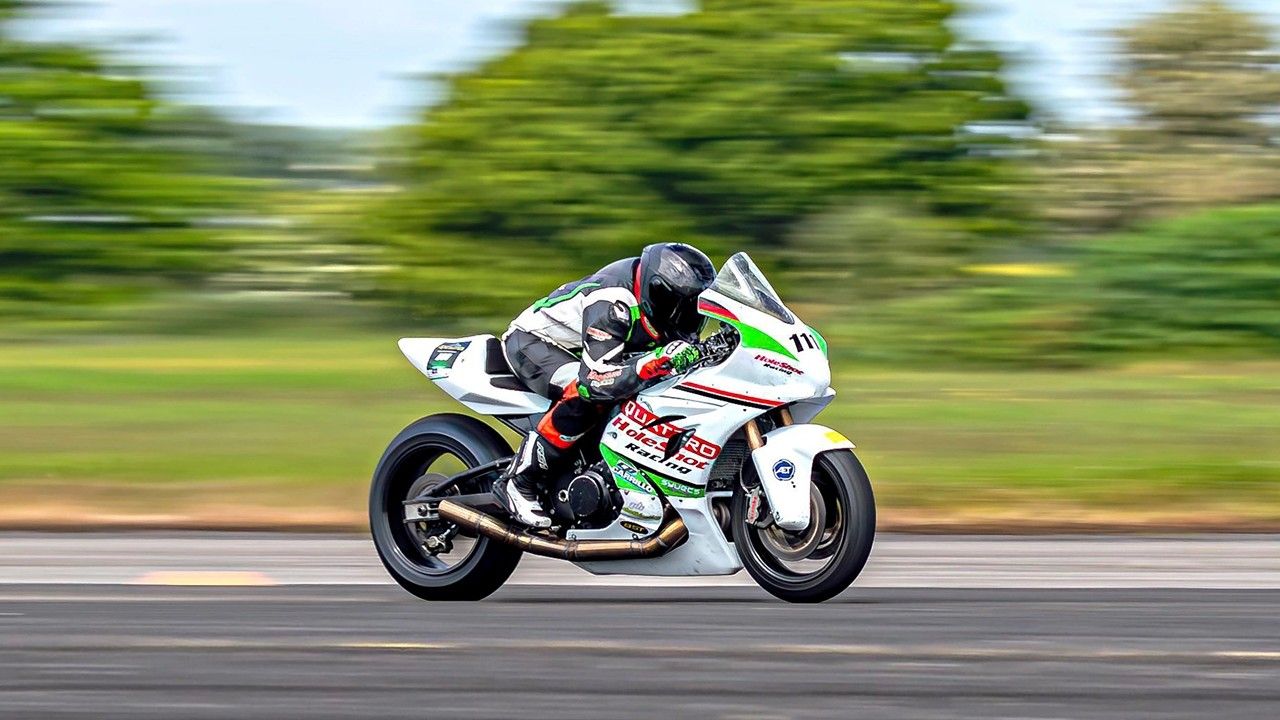
12 Fastest Production Motorcycles Currently On Sale
If you want to go as fast as possible, then you need to buy one of these incredible speed machines1 Dodge Tomahawk Wasn't Road Legal
Even The Reproductions Were Intended For Display Only
Because the Dodge Tomahawk was a concept vehicle, it didn't undergo the approval testing needed to make it road-legal and did not conform to regulations for street use. This was a pure engineering and marketing exercise by Dodge. Even the estimated 9 bikes sold through the Neiman Marcus catalog were not street legal, so the bikes were sold non-running to keep themselves from being liable. In fact, they were marketed as "rolling sculptures" but that did not prevent the buyers from making the proper modifications needed to get them up and running.
2 The Dodge Tomahawk Has 4 Wheels
Is It A Car Or A Motorcycle? Neither, It's A Tomahawk!
The Dodge Tomahawk has a car engine and four wheels but has a design and styling like a motorcycle. This is a cause for debate among car industry experts and followers. The question always comes up whether the vehicle is a car, a motorcycle, or a combination of both that must have its own specific model name and type created. The bottom line is that, by definition, the Tomahawk may have four independent wheels, but they are pushed together to form the appearance of one large wheel in front and one large wheel in the back. Additionally, there is one seat, two-foot pedals, handlebars, and hand brakes, all of which make the Dodge Tomahawk a motorcycle.
Wheels Specifications
|
Specification |
Dodge Tomahawk |
|
Front Wheels |
Dual, 20 inch × 4 inch |
|
Rear Wheels |
Dual, 20 inch × 5 inch |
|
Wheelbase |
76 inches |
3 Tomahawk Had A Racing Transmission To Handle The Excessive Torque
With A Two-Speed Manual Setup
A standard motorcycle transmission would not be able to handle the torque and power that the V-10 produced, so the engineers had to create something different. Something that could work with the engine but still fit into the bike's design. They came up with a foot-shifted, two-speed aluminum-cased sequential racing-style transmission with ring gears. The clutch was activated by a hand lever, and the rear tires were driven by a chain, just like the old-school motorcycles of the past.
4 The Dodge Tomahawk Had A Truly Unique Suspension System
Specifically Designed For Its 4 Wheels
Countersteering is a concept that all motorcycle riders are familiar with unless you are not a total noob. Since the Dodge Tomahawk had four wheels, it made this action a little bit harder, so the engineers had to come up with a new suspension concept. The patented design used independent suspension, front and back, with a hub-style steering linkage that allowed up to a 45-degree lean in either direction before the tires lifted off the ground.
Suspension Specifications
|
Specification |
Dodge Tomahawk |
|
Front Suspension |
|
|
Rear Suspension |
|
5 The Claimed Top Speed Of The Tomahawk Was 420 MPH
Making It Virtually The Fastest-Ever Motorcycle
The Dodge Tomahawk's top speed was a hypothetical estimate, given the horsepower developed by the Dodge Viper engine. A Dodge engineer said, "If a 3,400-pound Dodge Viper goes 190, this will go 400, easily." Later, the automaker revised the Dodge Tomahawk's top speed estimate to 300 MPH based on the gearing. This would have made it comfortably the fastest bike in the world.
However, this is only an estimation because the motorcycle was never officially tested on the track. That is because the Tomahawk has never been the subject of any real-world road tests. Dodge, however, claims that the bike was tested to 100 MPH during internal evaluations.
Fastest Motorcycles In The World
|
Motorcycle |
Top Speed |
|
Y2K MTT 420RR |
274 MPH (Unverified) |
|
Kawasaki Ninja H2R |
249 MPH |
|
Lightning LS-218 |
218 MPH |
|
Damon Hypersport |
200 MPH |
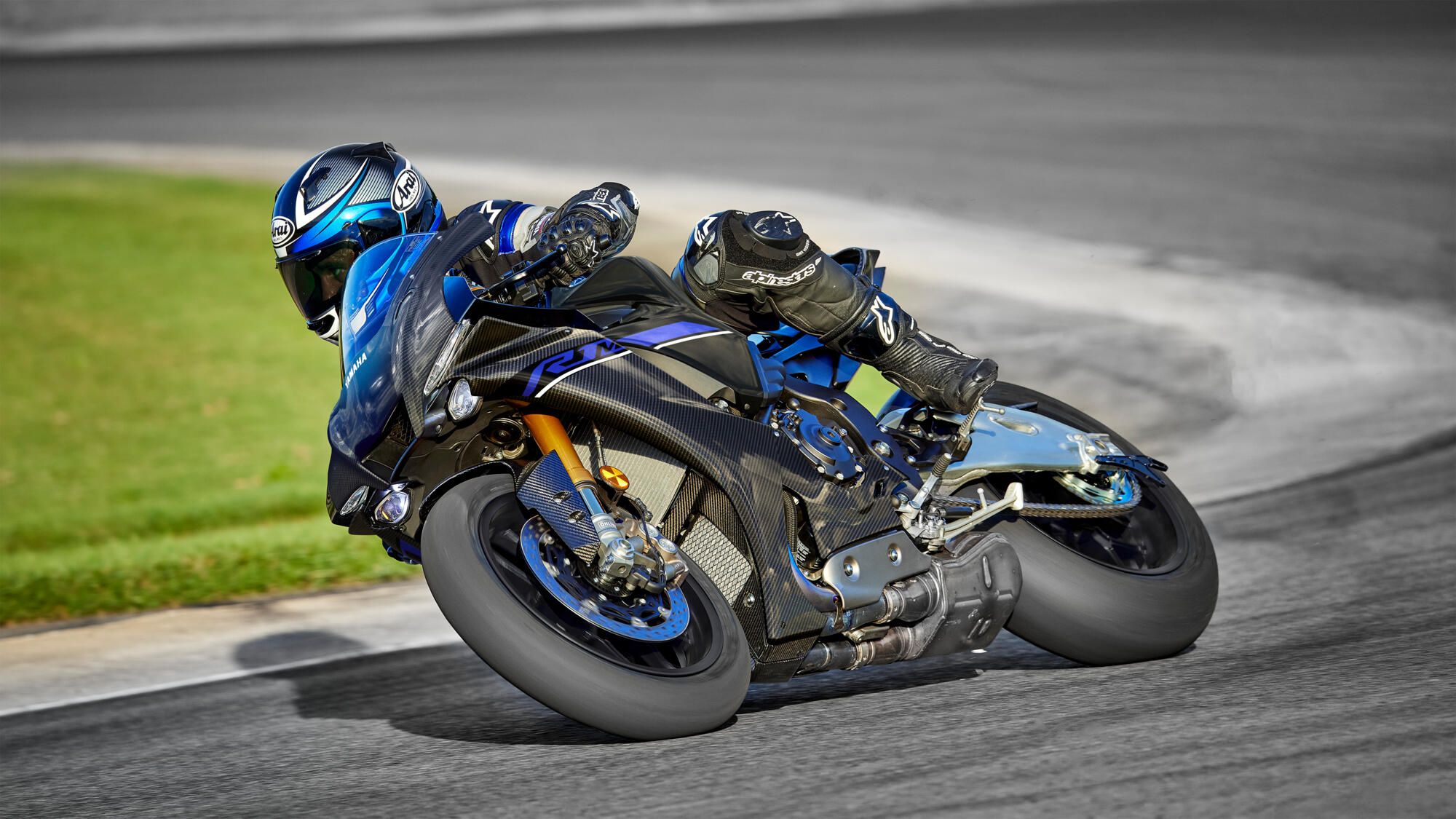
10 Fastest Motorcycles You Can Buy In 2024
If top speed bragging rights are what you're looking for, then these fast motorcycles should be at the top of your list.6 Tomahawk Had Upgraded Brakes To Stop It
Massive Brakes For Massive Power
You will need some good brakes when you have a motorcycle that can reach speeds unheard of in the normal realm of things. Dodge knew this and did not leave you hanging out to dry. They installed 20-inch stainless steel rotors for all the front and back wheels. A hand lever activated the front and a foot lever the rear, all of which were connected to two four-piston calipers for a total of 16 pistons, eight in front and eight in the back.
Braking Specifications
|
Specification |
Dodge Tomahawk |
|
Front Brake |
2 x 508 mm discs |
|
Rear Brake |
Single 508 mm disc |
7 It Was Fitted With A Dodge Viper Engine
The V-10 Engine Was Unveiled In 1992
The Dodge V-10 is not the engine in the limelight today, having given way to the 6.2-liter V-8 found in the Hellcat Charger and Durango. But back in the 1990s, it was the most talked about engine. First unveiled in 1992, it was stuffed under the hood of the new-for-1992 Dodge Viper and had displacement of 7,990cc, good for 400 horses. The power output was pushed up to 450 horsepower for the second generation, while the third generation of the engine (the one in the Tomahawk) displaced 8,285cc. Oh, and it had 500 horsepower.
Engine Specifications
|
Specification |
Dodge Tomahawk |
|
Engine |
Liquid-cooled, four-stroke, V10, OHV |
|
Displacement |
8,285cc |
|
Bore x Stroke |
102.4 mm x 100.6 mm |
|
Horsepower |
500 horsepower |
|
Torque |
525 pound-feet |
|
Transmission |
2-speed |
8 The Engineering For The Dodge Tomahawk Was Pretty Wild
It Was A 'Self-Balancing' Bike
Fitting a V-10 engine into a motorcycle concept was not easy. To keep the bike low, the engine was changed from the wet sump to dry sump lubrication, with the oil tank mounted at the front of the bike. The cooling radiators were moved into the 'V' of the engine, and the air was pushed through them by a belt-driven fan sourced from a Porsche 911.
The four wheels were mounted on the individual front and rear swing arms - outboard at the front and inboard at the rear - and employed hub-center steering on the front wheels. Next, the rim-mounted disc brake rotors were used at the front and back, along with a lockable rear suspension. So when it was upright, the Tomahawk could stand independently without needing a side stand.
9 The Tomahawk Chassis Components Were Milled From Billet Aluminum
To Hold Its Excessive Weight
The main chassis components started out as two 750-pound billets of aluminum machined down to just 25 pounds each! Now, keep in mind that each one of the bikes (all 10 that have been accounted for) was built by hand, so each chassis had to be milled from one massive chunk of aluminum down into a 25-pound. It would then need to form a streamlined chassis that was still strong enough to hold a V-10 and stand up to the extreme torque that the Dodge Viper engine produced.
10 The Dodge Tomahawk Is Enormous
Unlike Any Other Production Motorcycle
1,500 pounds may seem like a lot for a motorcycle, considering the fact that a Harley-Davidson Road Glide Limited only weighs about 932 pounds. But think about it this way; the V-10 engine alone weighed over 800 pounds, which in turn made this weigh more than any of the other bikes. On the flip side, it may be heavy for a motorcycle, but it is too light for anything with a V-10 as the powerplant.
Underpinnings
|
Specification |
Dodge Tomahawk |
|
Length |
102 inches |
|
Width |
27.7 inches |
|
Height |
36.9 inches |
|
Seat Height |
29 inches |
|
Weight |
1,500 pounds |
|
Fuel Capacity |
33.3 gallons |
11 The Dodge Tomahawk Was Only Produced For Four Years
Without Any Intentions To Mass Produce
While Dodge produced just one concept vehicle, Neiman Marcus produced nine replicas between 2003 and 2006. According to the people at Dodge, the Tomahawk was never meant to be built in large numbers. The concept vehicle was going to be the only one, simply as a way for the company to show their consumers that they were innovative and not afraid to "grab life by the horns." The hand-built replicas were not original by design but by demand because of the great response the showing had in 2003.
12 Dodge Built The Tomahawk To Make A Point
No Manufacturer Since Has Been Able To Do Anything Similar
Even though it was purely a concept and never intended for production, Dodge built the Tomahawk to showcase its engineering and technical skills. Calling it a "rolling sculpture," it was designed to create interest among the media and show that the Chrysler Group was willing to think out of the box. After all, one of the most spoken mottos regarding Dodge is "take life by the horns," which is precisely what they did when they made the Tomahawk.
13 No One Ever Published A Road Test
Thus, The Unverified 420 MPH Claim
Because it was a concept bike and not road-legal (even the replicas built by Nieman Marcus), no publication has ever gotten its hands on a Dodge Tomahawk for a road test. So we will never know the top speed or even if it is practical as a vehicle. The only internal testing that has been reported takes the bike up to 100 MPH, which is a far cry from what the company states it can reach. But, since engineers have noted that the bike would not be stable at such high speeds, maybe it is for the best that nobody tried to put down any official numbers.
14 The Press Reaction Was Critical
Made The Dodge Tomahawk A Living Legend
At first, the press didn't know what to make of the Tomahawk, with one critic calling it, 'one of Chrysler's nuttiest concepts.' Others criticized Dodge for disregarding the rules of motorcycle design and for being unable to decide if the Tomahawk was a sports bike or a cruiser. While the Tomahawk was 'not designed to be taken seriously,' critics said the only reason Dodge built the Tomahawk was for the 'sheer outrage of the exercise' and that it was 'so resolutely evil it has chunks of V-Max in its stool!'
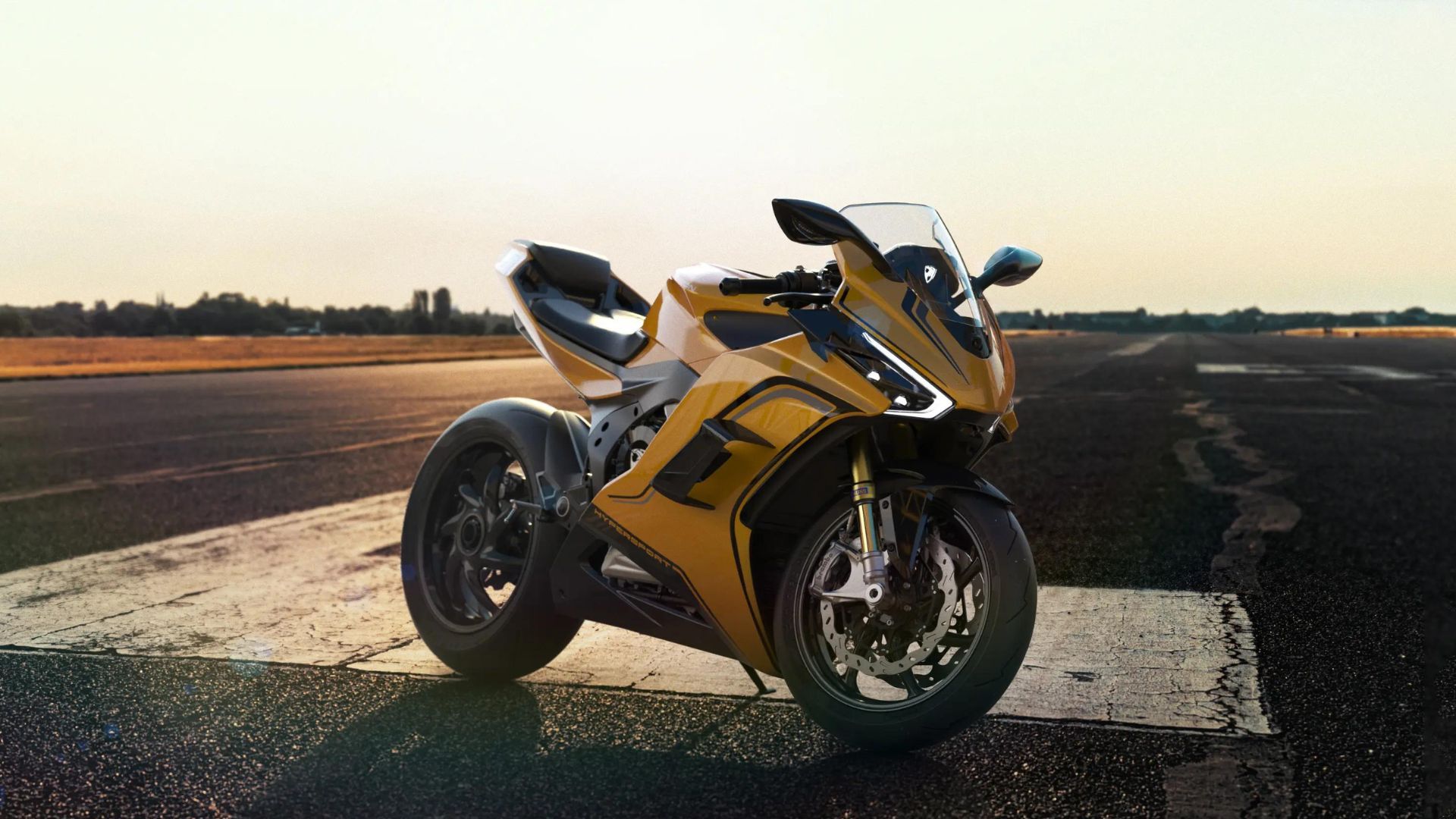
10 Fastest North American Motorcycles In 2024
These fast American machines are infusing speed culture in the otherwise touring-biased market15 The "Wow" And The "Why" Of The Tomahawk
Answering Critical Questions
What the press says is not always the most crucial reaction that a bikemaker, or in this case, a carmaker, can get. The public that buys the vehicle is much more important, so when they said "WOW" to the concept bike, Dodge knew that they had made a move in the right direction. However, along with those, they also received more than a few "Why". People wanted to know why a company would ever build such a machine. Dodge may not have had a good answer, but most speed junkies can agree that the one true answer is because they can!


